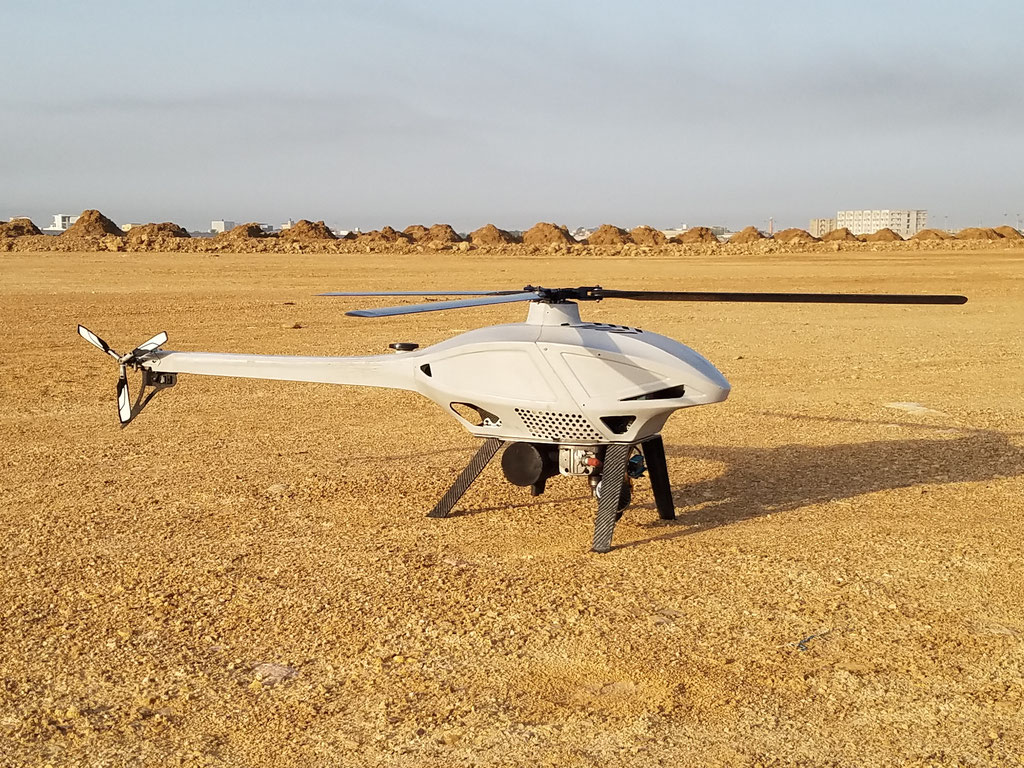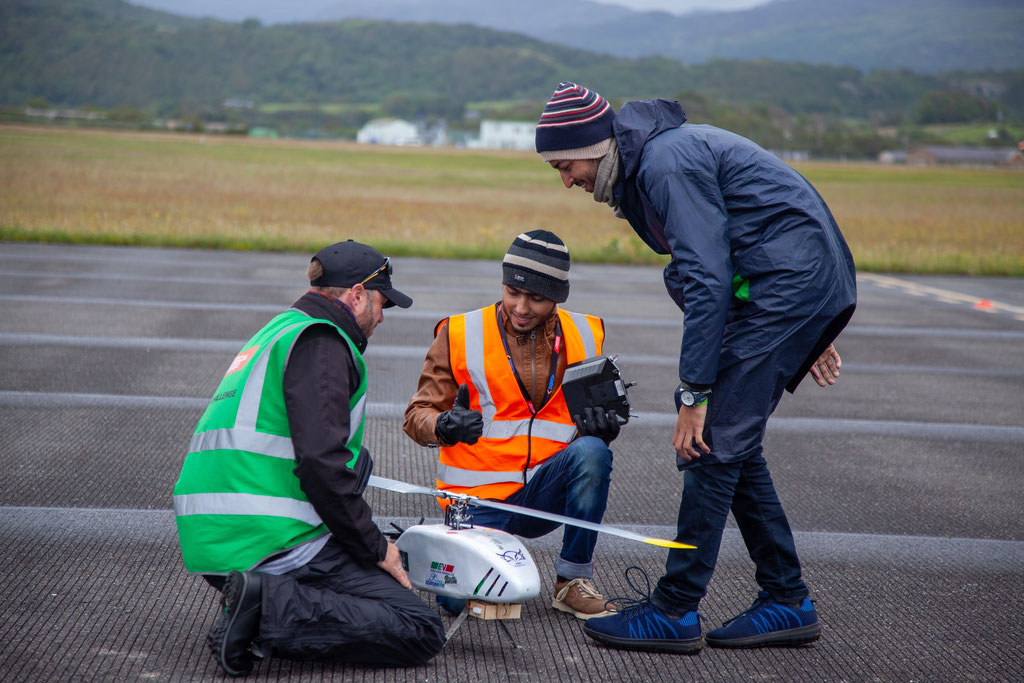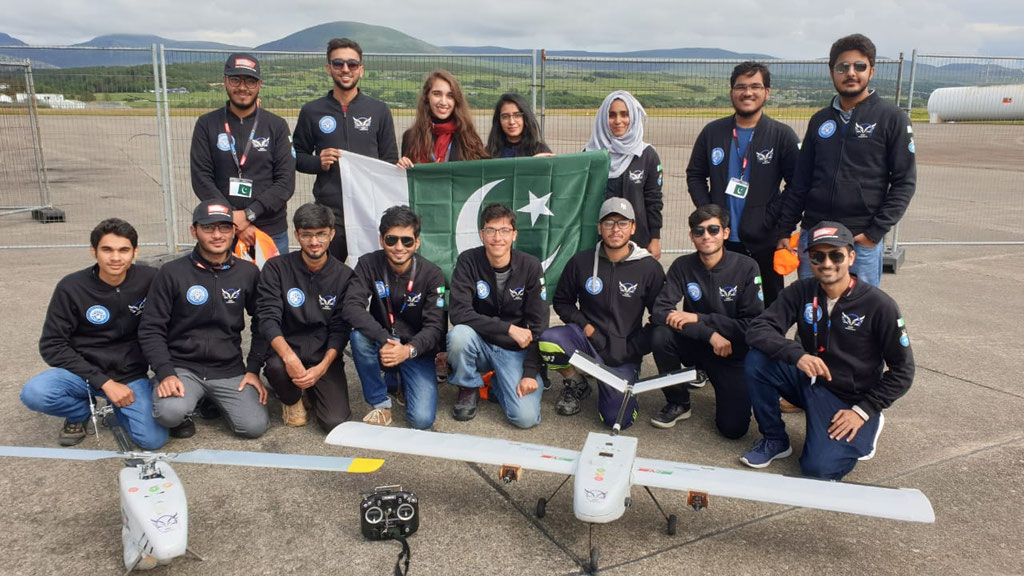When Ahsan Kahn and Rashad Reyaz watched the small-scale unmanned aircraft vehicle they had built fly for the first time, it was an “Ah-Ha” moment that set them on their life’s course.
“That’s when I knew this is what I was meant to do,” declares Ahsan, a 29-year-old resident of Pakistan and graduate of the country’s National University of Sciences and Technology. 
Rashad, a 27-year-old NUST alumnus and fellow Pakistani, chimes in with equal, if not even more, enthusiasm: “Seeing our vehicle fly must be like seeing your baby walk for the first time!”
Although neither of the two friends has children yet, they do have a “baby” – a helicopter UAV named K-Zero that they have built at their company, Echo Vision Innovations. It serves as their small-scale prototype flyer for GoAERO, the multimillion-dollar global challenge to create an entirely new class of emergency response vehicles – flyers that are more effective, efficient, and accessible than regular helicopters, small drones, and ambulances during natural and man-made disasters, extreme weather catastrophes, and medical emergencies, when every second counts.
“By the time of the GoAERO Final Fly-Off, we will have built larger models called K-1 and K-2,” Ahsan explains. He notes that these flyers, like their K-Zero, will be gas-powered VTOLs, vertical take-off and landing vehicles.
Although the K-Zero – and its successors – physically resemble the helicopters that are flying today, they are being built and equipped with both software and hardware advancements and engineering solutions to make them easier to manufacture and to enable them to fly and respond to emergencies in all conditions and times of day – and to do so more quickly, more effectively, and at a more accessible price point.
These advancements are vital and necessary given the tremendous upsurge in extreme weather emergencies caused by climate change around the world, and notably in his home country, Rashad points out. He cites as one example the colossal amount of flooding that engulfed Pakistan in 2022. Between June and November that year, these floods submerged about one-third of the country, causing widespread displacement and destruction, particularly in rural areas. Some 33 million people were affected: nearly eight million fled their homes, about 1,800 people died, and more than 20 million were in dire need of humanitarian aid.
“The floods were so massive that many villages were disconnected by the inundation of water,” he relates. “Roads and bridges were destroyed, leaving residents isolated. They desperately needed emergency supplies, food, water, and medicines.”
 The floods also caused devastating landslides, particularly in the northern parts of Pakistan, Ahsan notes, and helicopter availability was limited, and helicopters were very expensive to operate for delivering aid packages. “Border patrols were using mules to deliver aid packages and sometimes they carried the packages on their own backs. It would take many days to reach people.”
The floods also caused devastating landslides, particularly in the northern parts of Pakistan, Ahsan notes, and helicopter availability was limited, and helicopters were very expensive to operate for delivering aid packages. “Border patrols were using mules to deliver aid packages and sometimes they carried the packages on their own backs. It would take many days to reach people.”
The catastrophic events solidified for Ahsan and Rashad their decision to establish and focus Echo Vision Innovations on the development of UAVs. But for both men, this decision took a circuitous route. Indeed, both started out at NUST with the intention of pursuing automobile manufacturing.
“We got into airplanes out of sheer boredom with the car curriculum (initial semester curriculum),” Rashad recalls.
Ahsan echoes this sentiment, adding that while he was always “inspired by flying machines, I never thought I would be making these machines one day. I was so afraid of the science behind it.”
Serendipitously, one of his friends at NUST convinced him to build an RC (remote-controlled) plane. “Once I flew it, I gained so much confidence that the deep dive into aviation started.”
This deep dive led to the formation of a team with other mechanical and electrical engineering students, and soon NUST Air Works, as the team was named, was participating in UAV competitions both at home and internationally. The team, with its electric helicopter, won the Grand Champions Award at the IMechE UAS Challenge in Wales, UK, in 2019.

Fittingly for their current participation in GoAERO, that competition focused on search and rescue and aid delivery.
“Right after we won,” Ahsan says, “we began asking ourselves how we could improve our flyer? How could we extend our flight time and increase our payload capacity? How could we design rotor blades?”
Upon graduation, Ahsan and Rashad began striving to answer those questions, working first at a private company developing UAVs, and then founding Echo Vision Innovations together in 2022.
Three years later, they have achieved some of their goals. Yet, some challenges remain, especially those posed by GoAERO, with the biggest being how best to integrate visual navigation and flight controls seamlessly. They intend to test their small-scale model “to the extremes” until it is reliable enough to be tested on a full-scale model.
Ahsan and Rashad are also learning from the GoAERO expert webinars and looking to other competitors and GoAERO mentors for guidance.
“The last time we participated in a UAV competition,” Ahsan says, “we were students and wished we had a competition for professionals as well. So now we have GoAERO, which is bringing together teams from all over the world. These types of challenges help push engineering forward and create healthy competition among teams.”
Ultimately, he and Rashad hope to learn enough so that their flyer performs all the GoAERO missions successfully and “secures the winning spot,” he says. “We believe its speed and reliability will make it stand out in the competition. After that, our flyer will reduce the cost of emergency rescues, and enable direct flight from mission sites to hospitals, whether the team is helping people in remote areas, on oil rigs, or on islands – wherever emergency response is needed.”
To highlight your GoAERO Team, contact us at info@goaeroprize.com.
REMINDER: Stage 2 Registration Documents are available here.
Benefits for Teams can be found here.
